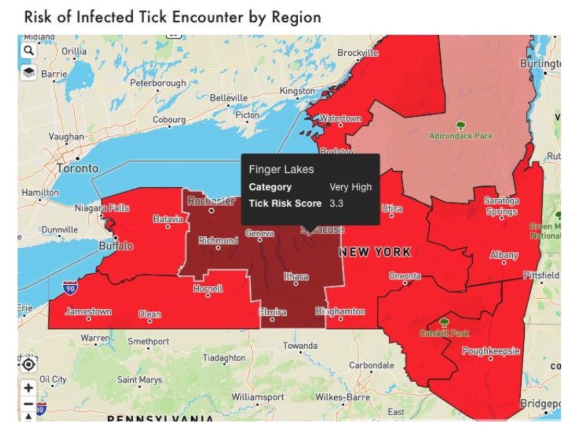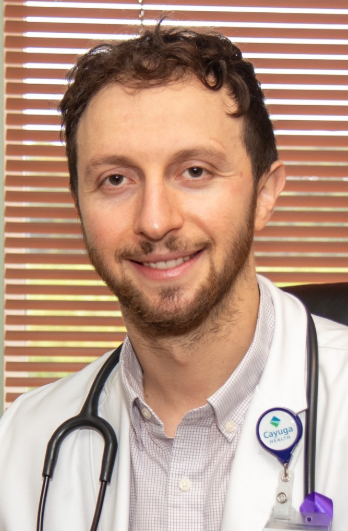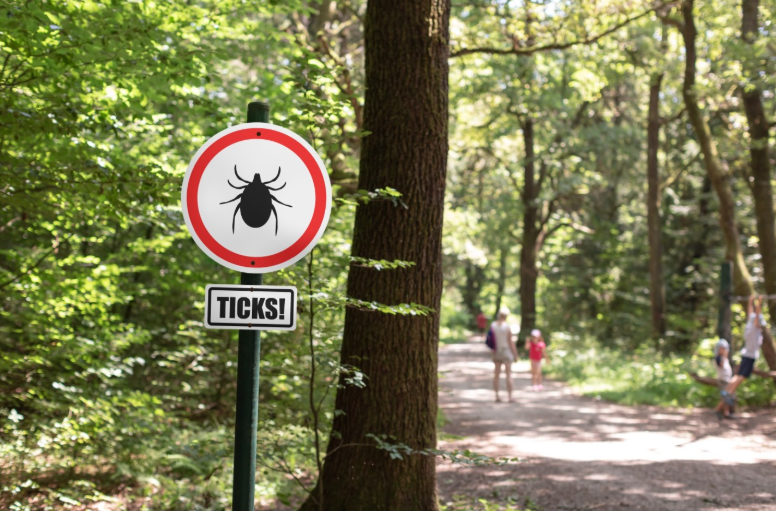ITHACA, NY (607NewsNow) — With warmer weather comes more time outdoors, and a greater risk of tick-borne illnesses. In particular, Lyme disease and anaplasmosis which are both spread by black-legged deer ticks are becoming more common. The prevalence of these ticks has increased throughout upstate New York. About half of adult ticks in the Finger Lakes carry Lyme, and a growing number carry anaplasmosis.
Deer ticks live in shady, moist environments and are found across New York State. Adult ticks (sesame seed-sized) are most active from March to mid-May and mid-August to November. Nymphs (poppy seed-sized) are active from mid-May to mid-August and are especially hard to see. Ticks are active above 30°F without snow cover. Both can transmit diseases, usually after being attached for more than 36 hours.

Most tick bites do not cause illness. If you find a tick, remove it with tweezers by grasping near the head and pulling steadily. Clean the area with soap and water. If the tick is engorged, you may choose to monitor the bite site or take a single dose of antibiotics to reduce Lyme risk.
Lyme disease symptoms:
· Fever, fatigue, aches, and sweats
· A red, round rash (often but not always a bullseye)
· If untreated, it may lead to more rashes, fever, or in rare cases, affect the heart, joints, or nervous system
· Treatable at any stage with antibiotics like doxycycline or amoxicillin
Anaplasmosis symptoms:
· Fever, severe headache, chills, fatigue, muscle aches, nausea, cough, and sometimes confusion
· Rarely causes a rash
Prevention tips:
· Wear long sleeves and pants outdoors
· Keep grass and brush trimmed in your yard
· Use tick repellents recommended by the NYS Health Department
· Check yourself and others thoroughly after time in wooded or grassy areas especially armpits, scalp, and behind knees
If you experience symptoms, testing right after a bite isn’t helpful as it takes 4 to 6 weeks to show infection. Early detection and treatment are key to preventing illness.
Eli Finkelsztein, MD, completed his medical education at the Universidad de los Andes in Colombia, his residency at New York-Presbyterian Brooklyn Methodist Hospital, and his fellowship training at New York-Presbyterian Hospital, Weill Cornell Medicine. He is an infectious diseases doctor with Cayuga Health and is a preceptor for the Cayuga Medical Center Internal Medicine Residency Program. He sees patients at the Cayuga Center for Infectious Diseases in Ithaca, 1301 Trumansburg Road, Suite R and 260 Tompkins Street in Cortland, (607) 241-1118.




